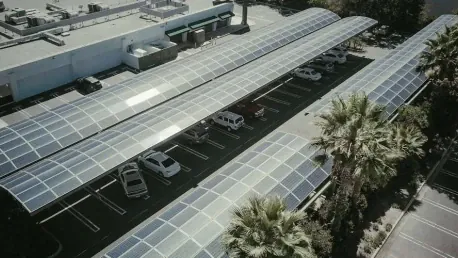In a significant stride towards a greener future, the capital costs for large-scale solar photovoltaic (PV) projects in Australia have decreased by 8% for the second consecutive year. This positive development, detailed in the Commonwealth Scientific and Industrial Research Organisation (CSIRO)’s latest GenCost draft report, is a clear reflection of Australia’s rapid energy transition largely fueled by variable renewable energy sources such as solar PV and wind energy. Overcoming recent economic hurdles, including supply chain disruptions and increased freight costs induced by the COVID-19 pandemic, the renewable energy sector has continued to thrive and expand at an impressive rate. Furthermore, the 2023-24 GenCost report highlights that this downward trend in capital costs is not limited to solar PV alone but extends to other essential technologies driving the energy transition, specifically highlighting battery energy storage systems (BESS).
Solar PV Dominates Cost-Effective Renewable Technologies
The 2023-24 GenCost report provides an optimistic outlook for the future of energy generation in Australia, underscoring the decreasing costs across essential energy transition technologies. Particularly, the report notes a significant 20% fall in capital costs for BESS in 2024-25, the largest improvement among the technologies analyzed. This capital cost reduction places the levelized cost of energy (LCOE) for renewable technologies at the lowest among all new-build technologies, making solar PV especially competitive in the market. The Climate Change Authority acknowledges this trend, emphasizing that solar PV represents the fastest-deployable technology essential for achieving net-zero emissions. Utility-scale solar PV projects generally take around two to three years for development, with an additional one and a half years for construction. On the other hand, rooftop solar PV installations require only two to three days, allowing for a rapid and widespread deployment across the country.
Comparatively, onshore wind projects, although also cost-efficient and renewable, demand longer development and construction timelines, typically three to five years for development and about two and a half years for construction. The timeline extends further for offshore wind projects, which require more than seven years for development and approximately six years for construction. Despite these extended timelines, both onshore and offshore wind projects serve critical roles in complementing the growing solar PV installations. However, the efficiency and rapid deployment capability of solar PV, coupled with the substantial cost reductions highlighted in the GenCost report, reinforce its status as the cornerstone of Australia’s renewable energy transition.
Nuclear Energy Debate Amidst a Renewable Future
As renewable technologies expand, the GenCost report dives into the debate on nuclear energy in Australia, which is heating up with the federal elections nearing. Although nuclear energy is currently banned in Australia, some political groups and advocates push for its reconsideration. However, CSIRO’s detailed analysis shows nuclear technology offers no cost advantage over renewables like solar PV and wind energy. Despite nuclear’s long operational duration, high reinvestment costs negate economic benefits. Global data indicates the average construction time for nuclear plants has increased to 8.2 years over the past five years, stretching the total development timeline to 12-17 years. Given these lengthy processes and high initial and ongoing expenses, CSIRO concludes that developing nuclear energy in Australia would take at least 15 years, making it unsuitable to meet immediate climate targets.
Moreover, the continuous drop in costs for solar PV and battery storage solidifies their status as the most economical and quickly deployable solutions. Solar PV projects, as the GenCost report outlines, can be executed faster than wind energy, crucial for hitting Australia’s carbon reduction targets. Thus, nuclear energy, with its extended and pricey development time frames, fails to present a viable economic alternative. Australia’s renewable energy future will likely be led by solar PV, enhancing infrastructure to achieve sustainable, net-zero emissions.









